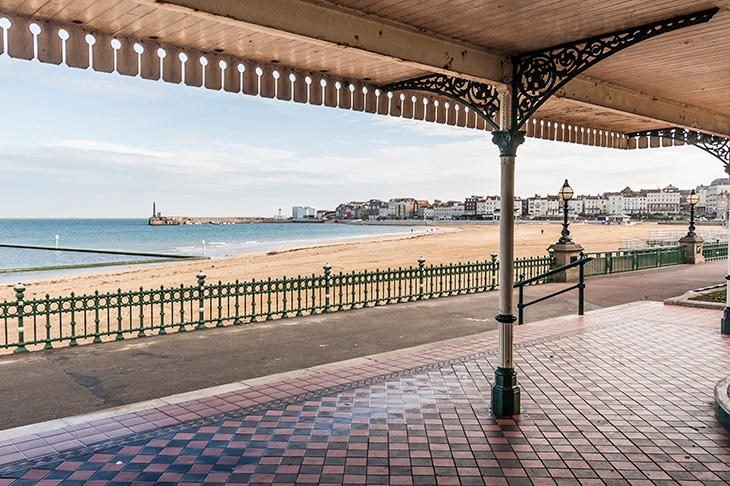The real secret behind Margate’s revival isn’t so much the restored Dreamland amusement park, but the trains. A decade ago, it gained high-speed, InterCity-like trains to St Pancras, putting it within 90 minutes of London.
Before the trains get to Margate they stop in Whitstable, which I remember as a bit of a hole in the 1970s. I went back recently and couldn’t believe how horrible the beach is — black sludge, sharp stones and shells. But then I got to the quayside and it was all posh seafood restaurants.
Accessibility as much as native charm has made Whitstable one of the most remarkable turnaround stories of any seaside town over the past 20 years. It is close enough to London to have become a weekend destination for the middle classes who can slurp their oysters while sending Barnaby and Chloe to run around on the black sludge in their wetsuits. A fast train to London is the facility that Hastings — more attractive than Whitstable in many respects — lacks, which is why regeneration there lags some way behind.
The secret behind Brighton, too, lies in its trains. Why of all seaside resorts has it seen a boom in house prices? It can’t be because of its beach, which is just a steep pile of pebbles. But it is commutable to London. If you really want lasting regeneration it isn’t just day-trippers you need — but high-spending residents, and preferably some business investment.
Brighton and Bournemouth are not especially popular among tourists — they are a lowly 12th and 13th respectively in the list of towns most visited by British holidaymakers. But no one worries about their economies because they have a commercial life of their own, and attract wealthy residents from elsewhere.









Comments
Join the debate for just £1 a month
Be part of the conversation with other Spectator readers by getting your first three months for £3.
UNLOCK ACCESS Just £1 a monthAlready a subscriber? Log in